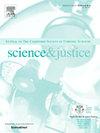Forensic applications of compound genetic markers: trends and future directions
IF 1.9
4区 医学
Q2 MEDICINE, LEGAL
引用次数: 0
Abstract
A compound marker integrates two or more genetic markers into a single assay. The application of compound markers enhances the predictive accuracy of genetic testing by leveraging the strengths of different genetic variations while mitigating the limitations of individual markers.
Compound markers include SNP-SNPs, SNP-STRs, DIP-SNPs, DIP-STRs, Multi-In/Dels, CpG-SNPs, CpG-STRs/CpG-In/Del, and Methylation-Microhaplotypes. Currently, no commercially available multiplex kit can amplify two or more different genetic markers simultaneously in a single reaction. Though compound marker panels for next-generation sequencing (NGS) platforms have been designed, however, reports are scarce on compound markers for genetic studies at a global scale, particularly for African populations. The African population is the most genetically diverse, but is underrepresented due to funding constraints and the need for novel techniques to address diverse and admixed ancestral backgrounds. With the emerging application of NGS in forensic investigations, human identification is not limited to traditional STR typing, as a single NGS run can simultaneously target autosomal STRs, sex determination markers, SNP markers, and InDel/DIP markers. Additional applications of compound markers include mixture deconvolution, detection of minor donors in unbalanced DNA samples, paternity testing, amplification of highly degraded DNA samples and inference of biogeographic ancestry.
The workflow of genotyping compound markers through CE and NGS has not yet been integrated into forensic laboratories because it requires the development and internal validation of genetic markers and analytical protocols. Furthermore, it is essential to address the ethical and legal considerations related to the responsible use of genetic data generated from compound markers. The current review explores the application of compound markers, identification of new micro and macrohaplotypes, and considerations for integrating NGS to facilitate forensic investigations.
复合遗传标记的法医应用:趋势和未来方向
复合标记将两个或多个遗传标记集成到单个分析中。复合标记的应用通过利用不同遗传变异的优势,提高了基因检测的预测准确性,同时减轻了单个标记的局限性。复合标记包括SNP-SNPs、SNP-STRs、DIP-SNPs、DIP-STRs、Multi-In/Del、cpg - snp、CpG-STRs/CpG-In/Del和甲基化-微单倍型。目前,市面上还没有能在一次反应中同时扩增两种或两种以上不同遗传标记的多重试剂盒。虽然已经设计了用于下一代测序(NGS)平台的复合标记面板,但是在全球范围内,特别是在非洲人群中,用于遗传研究的复合标记的报道很少。非洲人口是遗传多样性最丰富的,但由于资金限制和需要新的技术来处理多样化和混合的祖先背景,非洲人口的代表性不足。随着NGS在法医调查中的新兴应用,人类鉴定不再局限于传统的STR分型,因为单次NGS检测可以同时针对常染色体STR、性别决定标记、SNP标记和InDel/DIP标记。复合标记的其他应用包括混合反卷积、检测不平衡DNA样本中的次要供体、亲子鉴定、高度降解DNA样本的扩增和生物地理血统推断。通过CE和NGS进行化合物标记基因分型的工作流程尚未整合到法医实验室,因为它需要开发和内部验证遗传标记和分析方案。此外,必须解决与负责任地使用化合物标记产生的遗传数据有关的伦理和法律问题。本文综述了复合标记的应用、新微、大单倍型的鉴定以及整合NGS以促进法医调查的考虑。
本文章由计算机程序翻译,如有差异,请以英文原文为准。
求助全文
约1分钟内获得全文
求助全文
来源期刊

Science & Justice
医学-病理学
CiteScore
4.20
自引率
15.80%
发文量
98
审稿时长
81 days
期刊介绍:
Science & Justice provides a forum to promote communication and publication of original articles, reviews and correspondence on subjects that spark debates within the Forensic Science Community and the criminal justice sector. The journal provides a medium whereby all aspects of applying science to legal proceedings can be debated and progressed. Science & Justice is published six times a year, and will be of interest primarily to practising forensic scientists and their colleagues in related fields. It is chiefly concerned with the publication of formal scientific papers, in keeping with its international learned status, but will not accept any article describing experimentation on animals which does not meet strict ethical standards.
Promote communication and informed debate within the Forensic Science Community and the criminal justice sector.
To promote the publication of learned and original research findings from all areas of the forensic sciences and by so doing to advance the profession.
To promote the publication of case based material by way of case reviews.
To promote the publication of conference proceedings which are of interest to the forensic science community.
To provide a medium whereby all aspects of applying science to legal proceedings can be debated and progressed.
To appeal to all those with an interest in the forensic sciences.
 求助内容:
求助内容: 应助结果提醒方式:
应助结果提醒方式:


